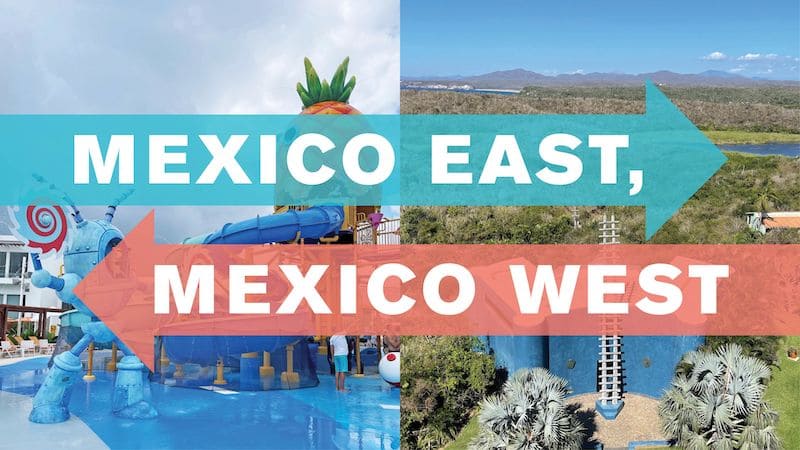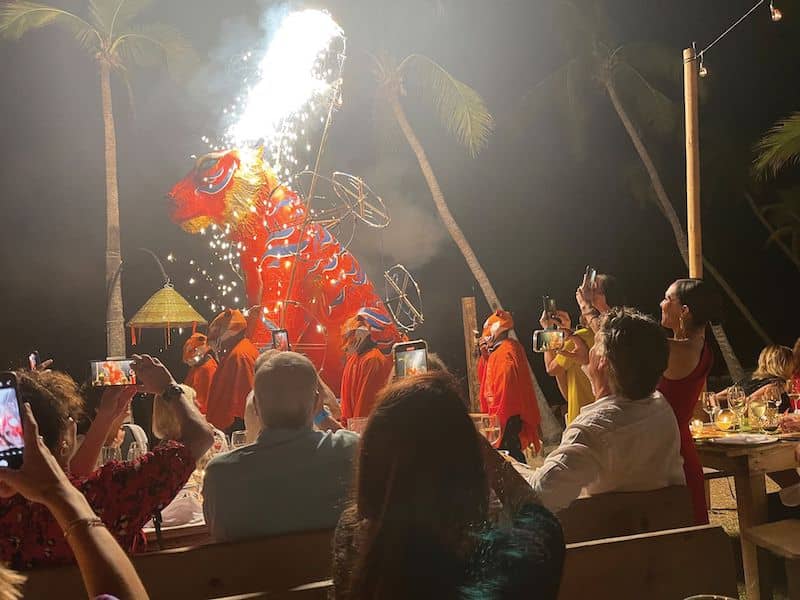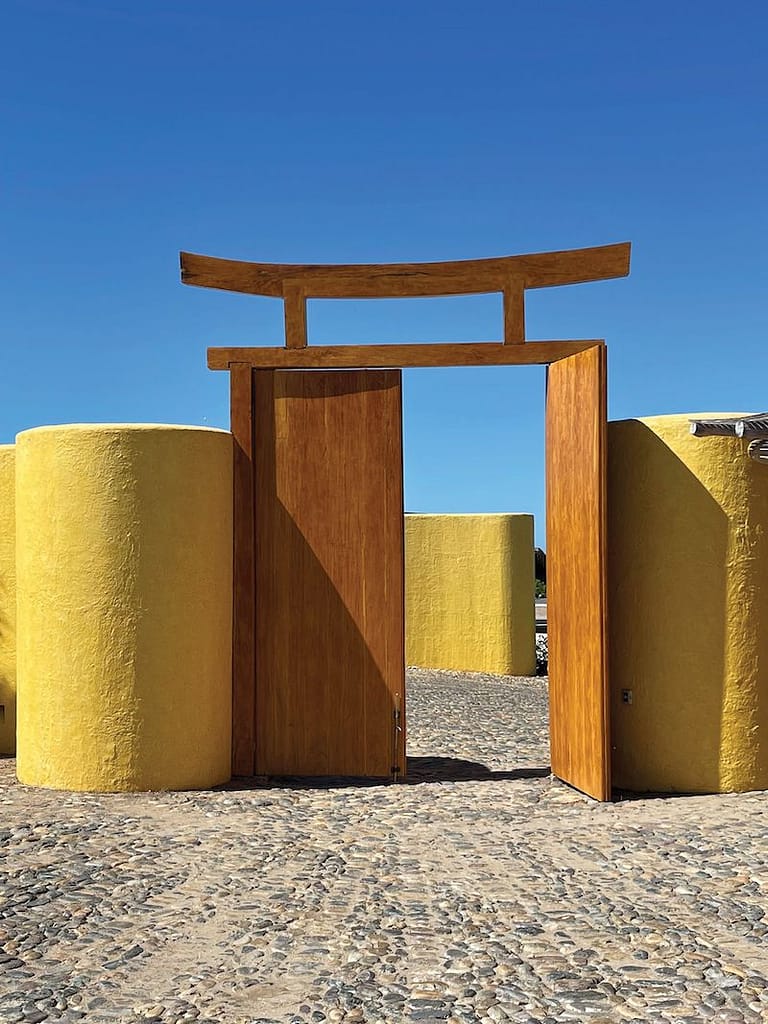Two unusual resorts are not only on opposite sides of Mexico, but appear in some ways to operate in different worlds.
TRAVEL WEEKLY
May 30, 2022

One property is on the Riviera Maya, featuring about 300 suites, a six-acre waterpark and a focus on family fun.
The other is on the Pacific Coast, offering a mix of villas, bungalows and suites, and is adjacent to a 25,000-acre protected biosphere.
Central to one is a whimsical theme of familiar cartoon characters that appeals to parents and kids alike.
Central to the other is a sense of community designed to attract aesthetics and upscale guests and residents.
Both offer fanciful design and architecture. And deeply woven into both are the visions of the entrepreneurs who brought them to life.
The property on Mexico’s east coast is the product of a husband and wife who, against all odds, built a significant tourism empire, guided by traditional values, hard work and gracious hospitality.
The property on Mexico’s west coast reflects the life’s work of a wealthy, eccentric, Italian-born banker determined to create a unique community built on creativity and open-mindedness.
While neither is in any regard typical — each draws strength from its unique approach to hospitality — they’re both expressions of how tourism has developed in Mexico, from the calm waters of the Caribbean to the more turbulent Pacific surf.
A Pacific coast visionary
Just one degree latitude south of the Riviera Maya — but separated from it by the entire width of Mexico — is Costa Careyes, located north of Manzanillo and south of Puerto Vallarta. It has little in common with the Nickelodeon resort except that its success, too, is linked in a very personal way to its developer.
Depending on where you are in Careyes, you might think you’re walking down a path in Positano, Italy; on the beach in a small, Mexican fishing village; poking around a modern home of the sort featured in Architectural Digest; in a Moorish palace; attending a polo game in the Hamptons; or, you’ve been shrunk, Alice-like, and fallen to the bottom of a giant goblet.
Wherever you are on the property, you’re living in the realized vision of Gian Franco Brignone, a larger-than-life Italian who, in 1968, shrugged off his expected role as a banker and, fleeing the menace of Italian Red Brigades and the sentiment behind the French student uprising, went to Sardinia to seek the advice of the Aga Khan about what to do next.
Told to go somewhere he could get away from political movements and government impositions, he ended up buying eight miles of Pacific coastline in Mexico and, despite a lack of supporting infrastructure, started building a community for himself and those he felt might be simpatico.
Brignone died earlier this year at age 96, but his children and the children of some of his influential friends continue his legacy, which include activities such as a beach blowout earlier this year, with tequila flowing and fireworks blasting, to celebrate the Chinese Year of the Tiger, Brignone’s birth sign and animal spirit.

There are options for accommodations at Careyes: One can stay in the resort hotel on a small bay, which was originally managed by Starwood but now is run by the owners; or rent one of the brightly colored bungalows tiered along one of the arms of the bay; or take one of three beach bungalows; or stay in one of the design-forward vacation rental villas with spectacular views, high in the coastal mountains rising out of the sea.

The resort strives to be a community of people with common interests, and its founder even developed a tongue-in-cheek list of 27 attributes he favored in people interested in buying a residence or staying on property, ranging from “to speak more than one language” to “[having] committed most of the seven deadly sins.”
Although the top residential villas rent for $10,000 per night, “if you come here expecting a five-star, 24-hour hotel, you’re missing it,” said marketing director Luisa Rossi di Montelera, whose father, from the family that makes Martini & Rossi vermouth, was one of the original investors.
“It’s about getting the right mix of people,” said Brignone’s son, Filippo, who, along with his sister Emanuela and brother Giorgio, plans to continue and even expand Careyes. “We need to be careful to attract people who understand [the vision]. People who think outside the box.”

“It’s not about being snobbish,” Emanuela added. “It’s about education, it’s about culture. To preserve such a place is our duty.”
The primary question following their father’s death, Giorgio said, is, “How can we grow without changing?”

He has some thoughts: Keep the community mix one-third each American, European and Mexican. Don’t let the architecture get too modern. Keep the density low (currently, 2% of the land is developed; the maximum, he said, should be 7%.)
“And no big hotels on the beach.”

There are three restaurants on-site, with a fourth planned on a bay about a 15-minute walk from the resort, but part of what’s striking about Careyes is what is not here: No Jet Skis to rent, no golf course. The spa is tiny and offers few bells and whistles.
Instead, what’s there reflects the interests of the founder and his family; for instance, the largest polo field in Mexico. Or a meteor incorporated into a small beachside monument. Or La Copa del Sol, an 88-foot-diameter concrete half-sphere, both an homage to women and a site of meditation, perched on an oceanside cliff.

And, of particular interest, the original residences built by Brignone. Although many of the newer villas are high-design and luxe — one resident put tiles of pure gold in her swimming pool — Tigre del Mar ($12,000 a night in high season), the Moorish-inspired Sol de Oriente ($10,000 a night in high season) and other early buildings reflect the originality of his character and thinking.
Although Careyes doesn’t offer every activity typically associated with resorts, some of the residents and those who settled in the nearby village of Careyes are tennis pros, scuba instructors and yoga teachers and offer their services through the resort. (A private gym, medical clinic, shops and an exceptional Mexican restaurant, Pueblo 25, are in the village of Careyes, an easy walk from the resort.)